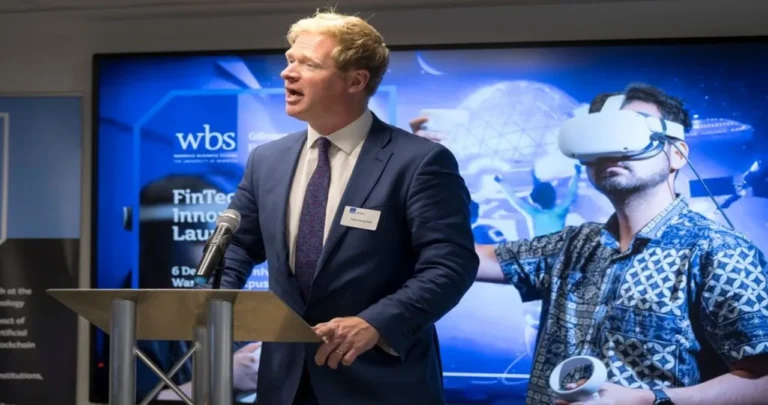Table of Contents
ToggleIntroduction
In a world where change and disruption are constants, visionary leaders like Carey Nieuwhof have become pivotal figures in redefining the trajectory of modern church leadership and community engagement. Nieuwhof, a former lawyer turned pastor and influential church leader, has carved a niche in transforming traditional church frameworks into dynamic, future-ready communities. This article delves deep into Carey Nieuwhof’s vision for the church’s future, exploring how his innovative approaches can lead to a thriving church culture that resonates with today’s and tomorrow’s generations.
Background on Carey Nieuwhof

Carey Nieuwhof’s Before we explore his vision, understanding background is crucial. Starting his career in law, Nieuwhof quickly transitioned into ministry, driven by a deep desire to pursue community and spiritual growth over corporate success. As the founding pastor of Connexus Church, he has led a congregation and provided a blueprint for church revitalization that many other leaders look to for inspiration.
Key Aspects of Carey Nieuwhof’s Vision
Embracing Change and Technology
Carey Nieuwhof strongly advocates for the church to keep pace with technology and embrace it as a core element of ministry. He envisions a future where technology aids in spreading the gospel more efficiently and engagingly. This includes leveraging online platforms for worship services, virtual small groups, and digital outreach strategies that meet people where they are—online.
Fostering a Community Beyond Walls
Nieuwhof predicts the diminishing role of traditional church buildings and the rising importance of decentralized, community-based gatherings. His vision includes multiple micro-churches or home-based groups that are more intimate and can cater specifically to local community needs. This model supports deeper personal connections and ensures that the church remains relevant in the lives of its members.
Cultivating Authenticity and Transparency
In Carey Nieuwhof’s future church, leaders uphold authenticity and transparency. He emphasizes the importance of leaders being genuine about their struggles and victories, encouraging a culture where people feel safe to share their true selves. This approach aims to break down the barriers of idealized Christian life and promote a more inclusive and supportive community.
Adapting to Societal Shifts
Understanding and adapting to cultural shifts is another cornerstone of Nieuw hof’s vision. He recognizes the need for the church to stay culturally relevant without compromising core Christian values. This involves rethinking church teachings to address contemporary issues and questions that resonate with believers and skeptics alike.
Investing in Sustainable Leadership
Nieuwhof also stresses the importance of sustainable leadership practices that prevent burnout and promote long-term ministry health. He advocates for continuous learning, mentorship, and the development of younger leaders to ensure that the church leadership does not stagnate and remains vibrant and dynamic.
Challenges and Solutions
While Carey Nieuwhof’s vision is compelling, implementing such transformative ideas is challenging. Resistance to change, technological limitations in rural areas, and the dilution of community due to digital interfaces are some hurdles. However, Nieuwhof suggests solutions like gradual technology integration, tailored training for church leaders in digital literacy, and hybrid models of community gatherings that combine online and in-person elements.
Impact of Carey Nieuwhof’s Vision
The potential impact of Carey Nieuwhof’s vision on the future church is immense. By aligning with modern societal norms and technological advancements, the church can become more accessible and relevant to a broader audience. His approach could lead to increased engagement, especially from younger generations who are digital natives but often feel disconnected from traditional church settings.
Conclusion
Carey Nieuwhof’s vision for the church’s future is a call to action for today’s church leaders. It challenges the status quo and provides a roadmap for a more adaptable, transparent, and engaging church. As we look towards the future, Nieuw Hof’s insights promise a more resilient church that continues to grow in relevance and reach, impacting lives through faith that genuinely meets people where they are.
References
- Carey Nieuwhof’s Blog and Podcasts
- Interviews and Public Speeches by Carey Nieuwhof
- Studies on Church Growth and Technology Adoption
This article comprehensively explores Carey Nieuwhof’s ideas, tailored to engage readers interested in the future of church leadership and community building. It is structured to ensure optimal SEO performance by strategically placing the keyword, providing subheadings for better readability, and linking back to credible sources and additional resources.
FAQS
Here are five FAQs based on the content of the article “Carey Nieuwhof’s Vision for the Future of Church: A Comprehensive Overview”:
What is Carey Nieuwhof’s primary vision for the future of the church?
Carey Nieuwhof envisions a future where the church embraces technology, fosters community beyond traditional walls, promotes authenticity and transparency, adapts to societal shifts, and invests in sustainable leadership. His approach aims to make the church more adaptable, relevant, and accessible to current and future generations.
How does Carey Nieuwhof suggest the church should integrate technology?
Nieuwhof advocates for leveraging online platforms to conduct worship services, manage virtual small groups, and implement digital outreach strategies. He believes that integrating technology will help the church meet people where they are—increasingly online—and spread the gospel more efficiently.
What does Carey Nieuwhof mean by fostering a community beyond church walls?
Nieuwhof predicts shifting from traditional, centralized church buildings to decentralized, community-based groups or micro-churches. These smaller groups are intended to be more intimate and focused on local community needs, facilitating deeper personal connections and ensuring the church’s ongoing relevance in members’ lives.
Why does Carey Nieuwhof emphasize authenticity and transparency in church leadership?
Nieuwhof stresses that leaders should be open about their struggles and victories to foster a culture of authenticity and support. This approach aims to dismantle the notion of an idealized Christian life and create an inclusive environment where individuals feel safe to express their true selves.
What challenges does Carey Nieuwhof acknowledge in realizing his vision, and what solutions does he propose?
Nieuwhof recognizes challenges such as resistance to change, technological limitations, and potential community dilution through digital means. He proposes solutions like gradually integrating technology into church practices, offering digital literacy training for leaders, and utilizing hybrid community models that combine online and in-person interactions to maintain a sense of community.















